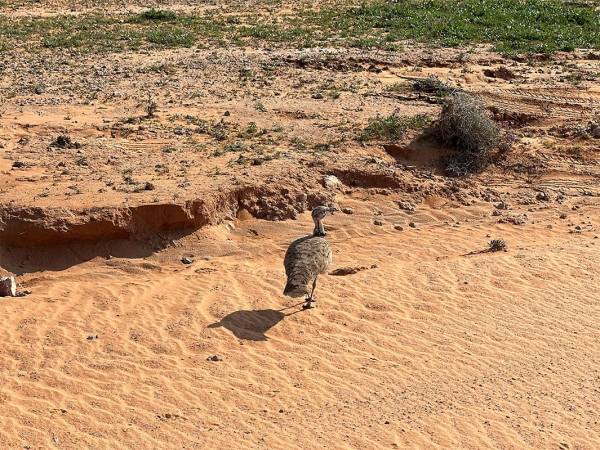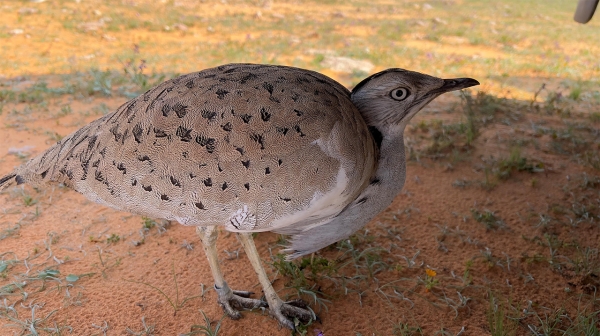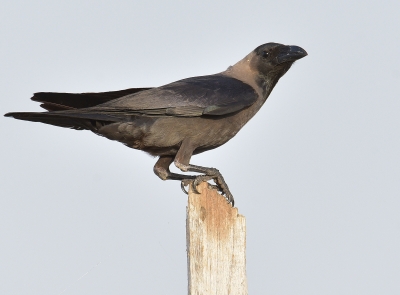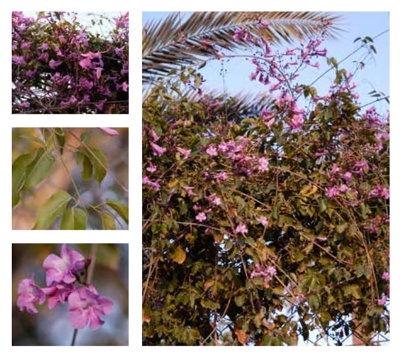

The Houbara Bustard is a type of wild bird known for its low-altitude flight, landing on the ground before taking off again. Both the male and female share the same name, Houbara. Some species of the Houbara Bustard are resident in the Kingdom of Saudi Arabia, while others are found in Asia, Europe, Africa, and Australia. Certain species migrate to Saudi Arabia during winter from Europe and some parts of Asia in the fall months.
The Arabs in ancient times associated barren lands with the Houbara Bustard. The bird appears during rainfall and in the spring season, settling near small rocks or desert shrubs. It begins its seasonal migration during periods of drought and lack of rain and is known for flying at night when relocating.
Names and characteristics of the Houbara Bustard
In Arabic, the male Houbara Bustard is called Habraj, while its chick is known as Yahbour. Other names for the species include Habrabr and Nahar. Its species include al-Houbara al-Mutamawija, al-Arabiya, and al-Kabeera. The bird’s name originates from its tendency to inhabit empty, desolate lands. The Houbara Bustard is one of the largest birds in size and the heaviest bird capable of flight. The female weighs approximately two kg, while the male weighs around 3.5 kg. It has a distinctive crest, plumage, and neck. Certain types, such as al-Dajaja and al-Kharb, are known for being the constant companion of falcons. Also in Arabic, the female Houbara is called al-Dajaja, and the male is called al-Kharb. The Houbara Bustard is the primary prey for falconers, presenting a challenge for both them and their falcons. Its hunting is considered a source of pride.
Life of the Houbara Bustard
The Houbara Bustard is a ground-dwelling bird that builds its nests among grasses to conceal its chicks from the harsh natural conditions during breeding seasons. The falcon is its main predator, usually waiting for it to settle before striking. The Houbara Bustard is considered the best game bird due to its flavorful meat. It feeds on seeds, green plants, fruits, and grains. It appears large in size, with long legs and a long neck. Males are larger than females, and both have feet with only three forward-facing toes. Its chicks remain with it even after leaving the nest.
Related quizzes
Related articles


